Let’s talk buttermilk.
When deciding to go dairy free, this dairy staple might not be the first thing you think about finding a suitable replacement for. However, it sure does play an important role in certain instances!
We’re getting into exactly what this stuff is, how it impacts your dishes, and how to fill the void left by a buttermilk absence in your favorite vegan recipes. And of course, we're going to explain how there are a handful of ingredients--likely already in your pantry, we might add--that can be used to whip up a homemade vegan buttermilk substitute!
Table of Contents
What is Buttermilk?
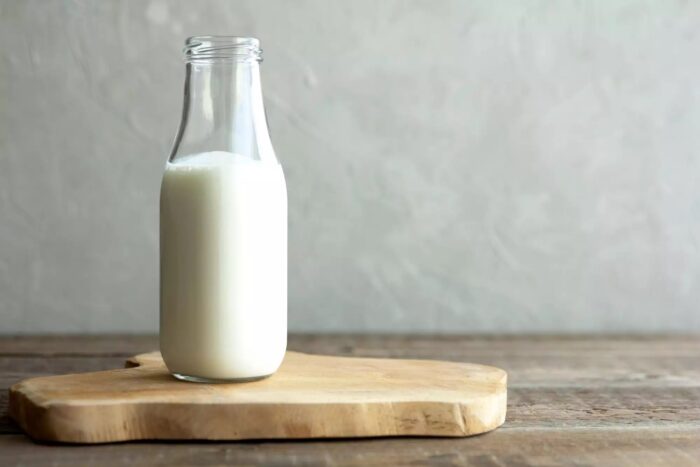
Buttermilk made its original debut as a byproduct of the butter making process. As cream was churned into butter, the milk fat would naturally clump together while the remaining liquid separated itself. This liquid became fermented, meaning the naturally occurring bacteria in the raw cream would consume available milk sugars and produce lactic acid, giving buttermilk its tangy taste. This fermentation process also gave traditional buttermilk a longer shelf life as compared to fresh milk products, an important distinction in the days before refrigeration.
Nowadays, unless you make your own homemade buttermilk, buttermilk does not result from the butter-making process. Commercial milk products are almost always pasteurized, thereby preventing the possibility of natural fermentation. Instead, during commercial buttermilk production, lactic acid bacteria are added into regular cow’s milk which sets off the fermentation in a much more controlled (i.e., more safe) manner.
Despite its name, buttermilk does not actually contain any butter, nor any significant amount of milk fat for that matter! Rather, it gets its thickness--which lies somewhere between heavy cream and regular milk--from the effects that the lactic acid has on the milk proteins.
What is Buttermilk Used For?
Buttermilk is rarely used as a standalone ingredient, and is almost never downed like a beverage, that’s for sure! Its usefulness is not to be diminished however, as it serves important roles in a wide range of sweet and savory recipes. Here are a few roles that you may be looking to fill as you seek a vegan buttermilk substitute:
- Buttermilk’s acidity lends leavening power, as the lactic acid results in bubbling action when it comes into contact with baking soda, making baked goods light and lifted.
- The acidity of buttermilk inhibits gluten formation in baked goods, resulting in a fluffy, more tender final product.
- Buttermilk is often used as a flavor profile in dips, dressings, and spreads!
7 Vegan Substitutes For Buttermilk
Buttermilk has 2 important characteristics when it comes to being used as an ingredient--thickness and tang. Therefore, this is what we’re after when seeking a dairy free substitute for buttermilk. Our top 7 vegan substitutes for buttermilk are:
1. Vegan Sour Cream
2. Vegan Yogurt
3. Apple Cider Vinegar
4. Lemon Juice
5. Cashew Cream
6. Cream of Tartar
7. Tofu
Now, you can’t just go and use these ingredients as they are to replace buttermilk in a recipe, so you’ll need to do a bit of mixing and measuring in order to make your own vegan buttermilk substitute from each ingredient. Don’t worry though, we’ll walk you through it!
A Note on Dairy Free Milk: You’ll notice that most of these options involve at least a small amount of non-dairy milk. You can use any non-dairy milk of your choice, but we’ll have some more information on the options as well as our recommendations a bit later!
1. Vegan Sour Cream
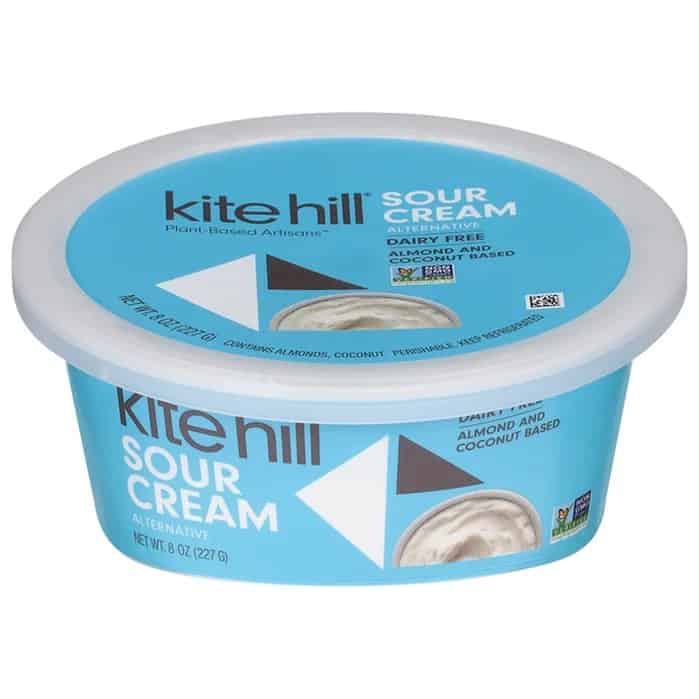
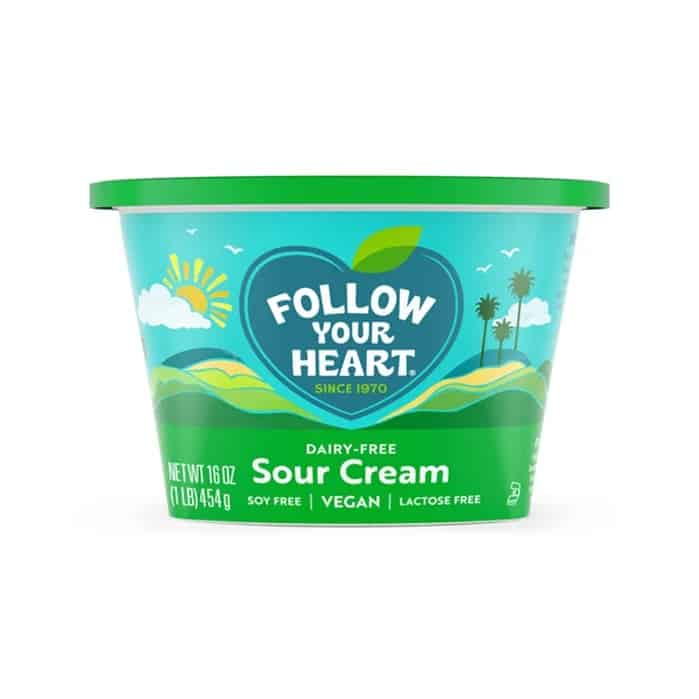
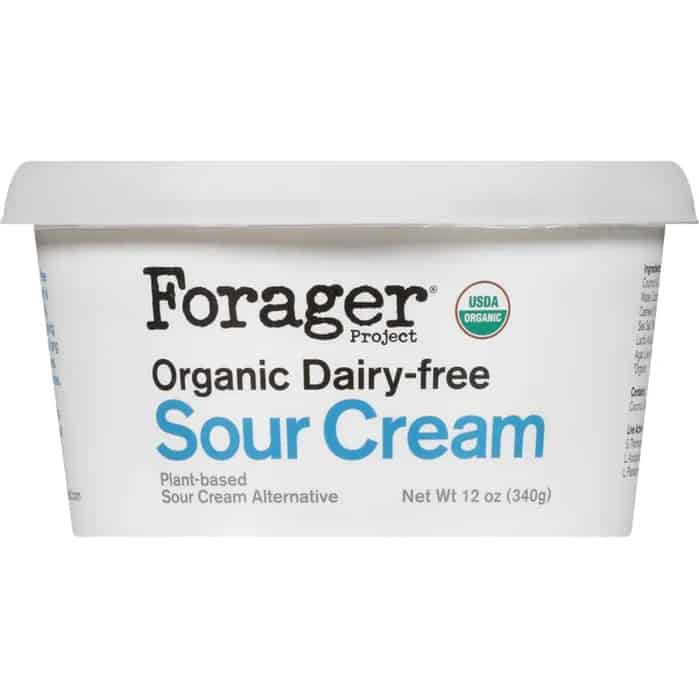
Sour cream is an excellent substitute for buttermilk as it meets two important criteria that buttermilk has: viscosity (thickness!) and bacterial cultures, which are responsible for the development of acidity.
Thankfully, there are a load of readily available vegan sour cream options. Most are made from coconut milk or coconut cream, cashew milk, butter beans, or almonds.
The problem with sour cream is that it is a bit too thick to replace buttermilk in an even ratio in your recipes, so it must be thinned out a bit with some non-dairy milk. You could also use a splash of water if you prefer or simply don’t have enough plant based milk on hand.
How to Substitute
You’ll need:
- Store-bought vegan sour cream
- Dairy-free milk of your choice
Combine ¾ cup vegan sour cream with ½ cup plant milk or water. Whisk until smooth, then use this as a 1:1 replacement wherever your recipe calls for buttermilk.
2. Vegan Yogurt
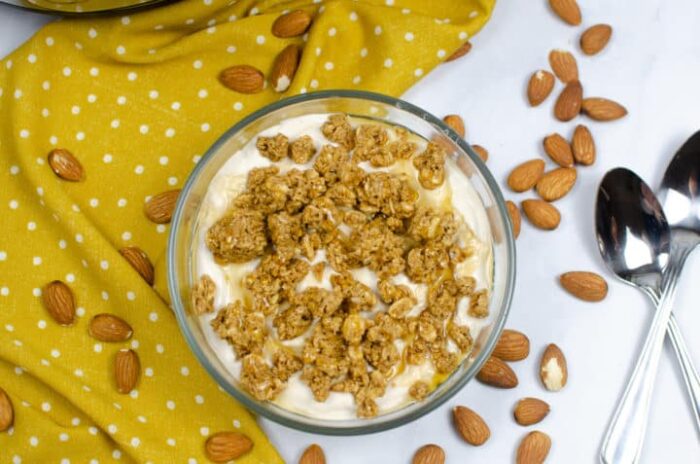
In a similar fashion as sour cream, vegan yogurt is also a great option for replacing buttermilk in your favorite vegan recipes. Not only does it feature a comparable thick, smooth consistency, but it also contains those all-important bacterial cultures which give yogurt its notably sour taste and “cultured” texture.
If you follow a vegan eating plan and therefore consume plant based yogurt regularly, we highly recommend trying some homemade yogurt such as our Instant Pot Almond Milk Yogurt. If you’re looking for something a bit more convenient or need just enough to fill out a recipe, there are plenty of store bought vegan yogurts that are made from a range of different non-dairy milk products. Try coconut milk, oat milk, soy milk, or cashew milk vegan yogurts!
How to Substitute
You’ll need:
- Plant based yogurt of your choice
- Plant based milk of your choice
Just like the sour cream, straight yogurt is too thick to replace buttermilk. To make 1 cup of vegan buttermilk, combine ¾ cup plant based yogurt and ¼ cup plant based milk; whisk until smooth, and then use wherever your recipe calls for buttermilk!
3. Apple Cider Vinegar
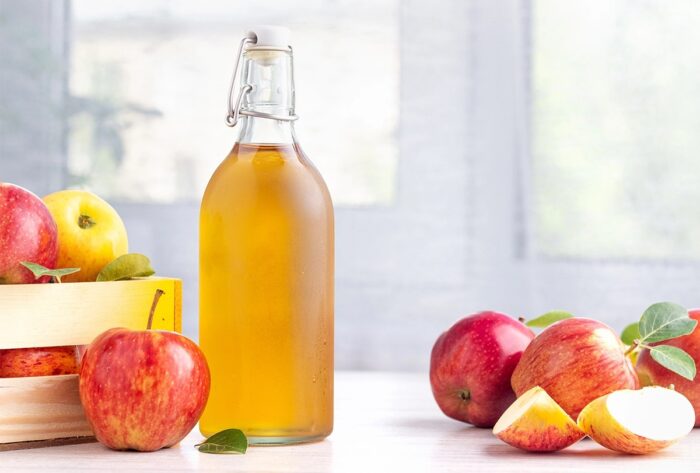
While you can’t exactly get a container of lactic acid (the acid which is responsible for giving buttermilk its tang), you can of course get another type of acid to use in its place, and vinegar is a great place to start!
Now, bear in mind that the simple addition of an acid to a plant based milk will produce a result which is not the same as one which is cultured--that is, when the acid is produced by way of bacterial fermentation. In this type of quick substitute, the consistency will be thinner, the acidity will taste sharper, and the overall flavor profile will be less developed. Nevertheless, it will perform in several of the same ways and is especially ideal for use in baked goods and pastry recipes.
Apple cider vinegar or distilled white vinegar is best here as fancy wine vinegars or balsamic vinegar could impart too much additional flavor (and even more sweetness!) to your recipe.
How to Substitute
You’ll need:
- Vinegar (either apple cider vinegar or distilled white vinegar)
- Non-dairy milk of your choice
Stir 1 tablespoon of vinegar into 1 cup of plant based milk, then let the mixture sit at room temperature for about 5-10 minutes. Stir again and then your homemade vegan buttermilk is ready to use as a 1:1 replacement where buttermilk is called for in your recipes.
Note: don’t expect this mixture to get as thick as regular buttermilk, you’re just looking for it to change texture and “curdle” slightly, becoming slightly thicker and a bit clumpy.
4. Lemon Juice
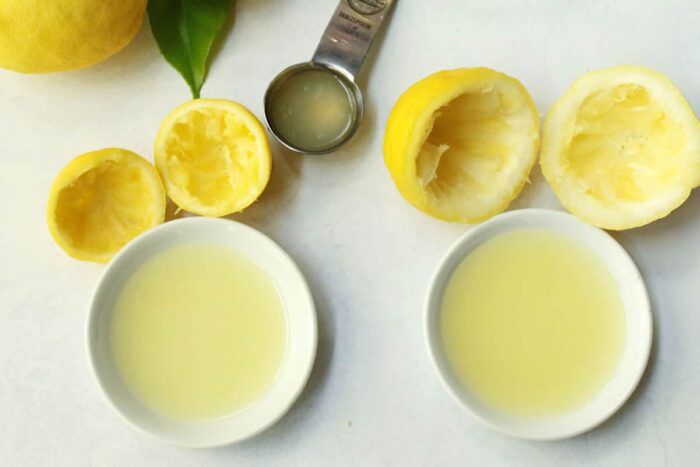
If you find yourself out of vinegar, or just would prefer something a bit more fresh, lemon juice is a great form of acidity to use here as well. The flavor will be a bit different of course as lemon juice is decidedly bright and citrusy, but the overall effect will be about the same.
While other citrus juices contain plenty of acid as well, we recommend sticking with lemon here and saving other citruses for another use. They usually have a higher sugar content and more detectable flavors, whereas lemon juice tends to blend right into the background of your dish rather than leaving it tasting “lemon-flavored”.
It’s important to use fresh lemon juice here, as the bottled stuff can vary in terms of flavor and quality and also tends to lose potency as it hangs around your refrigerator!
How to Substitute:
- Fresh lemon juice
- Non-dairy milk of your choice
Combine 2 tablespoons of lemon juice with 1 cup of dairy free milk, stir, and let sit. After about 5-10 minutes, the milk and lemon juice mixture should be slightly thickened. Stir again and use it as a 1:1 replacement in your recipe where buttermilk is called for.
5. Cashew Cream
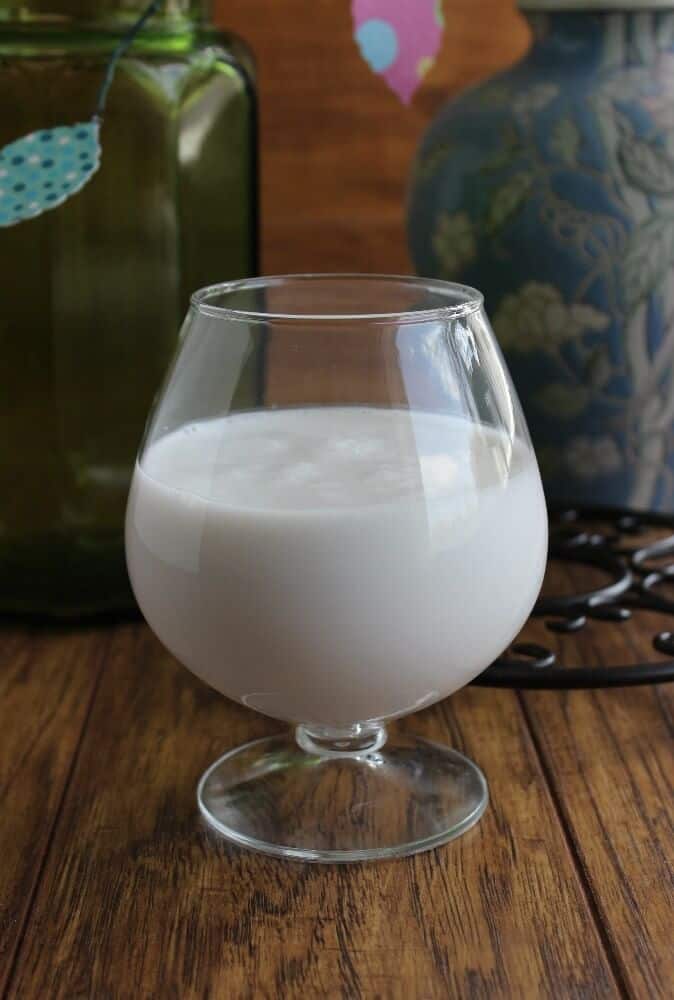
The beauty of using cashew cream as a vegan buttermilk substitute is that it has all of the thick, creamy texture you’re looking for thanks to those cashew nuts! All nuts--and cashew nuts especially--have the amazing ability to soak up liquid, making them soft and blend-able.
The key to a successful cashew cream is to allow them plenty of soak time and then blend until the mixture is super uniform and cohesive, which may take a bit of time depending on your blender.
On its own, cashew cream (such as that you’d use as a creamer or make ice cream from) will not have the acidity we’re looking for in a buttermilk substitute but that can easily be rectified by following our recipe below.
How to Substitute
You’ll need:
- Raw cashews (unroasted and unsalted), soaked for about 8 hours
- Water
- Fresh lemon juice or vinegar (either apple cider vinegar or distilled white vinegar)
Follow our recipe for Homemade Cashew Creamer, omitting the sweetener and vanilla extract and adding in 1 teaspoon of vinegar or lemon juice.
If you prefer a thicker result, add in some additional soaked cashews.
6. Cream of Tartar
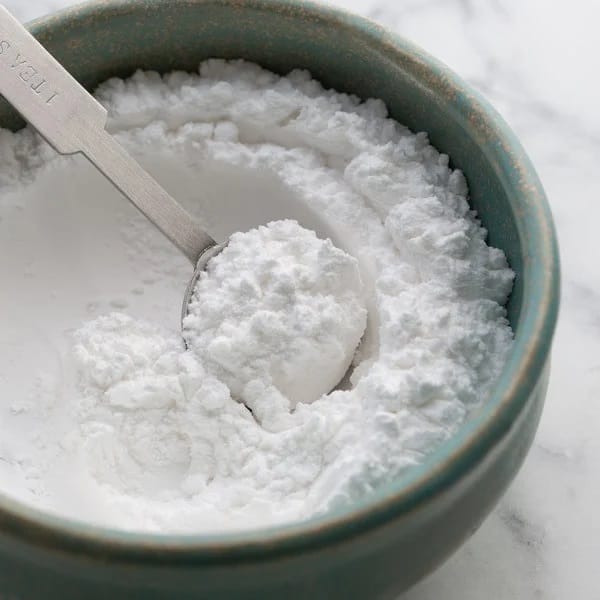
This mysterious resident of the baking aisle is actually the powdered form of an acid which is a byproduct of winemaking. As an acidic powder, this ingredient supplies many of the same properties as vinegar or lemon juice, but in this case without the addition of any extra liquid.
This makes cream of tartar best suited for baking recipes where there are other dry ingredients that the cream of tartar can be incorporated into, as it is prone to clumping when added directly into liquid ingredients. As such, cream of tartar is not a great vegan substitute for buttermilk in uncooked recipes like dressings.
How to Substitute
You’ll need:
- Cream of tartar
- Dairy free milk
For every cup of buttermilk your baking recipe calls for, add 1½ teaspoons of cream of tartar to the recipe's dry ingredients, and 1 cup of non-dairy milk to the recipe’s wet ingredients.
7. Tofu
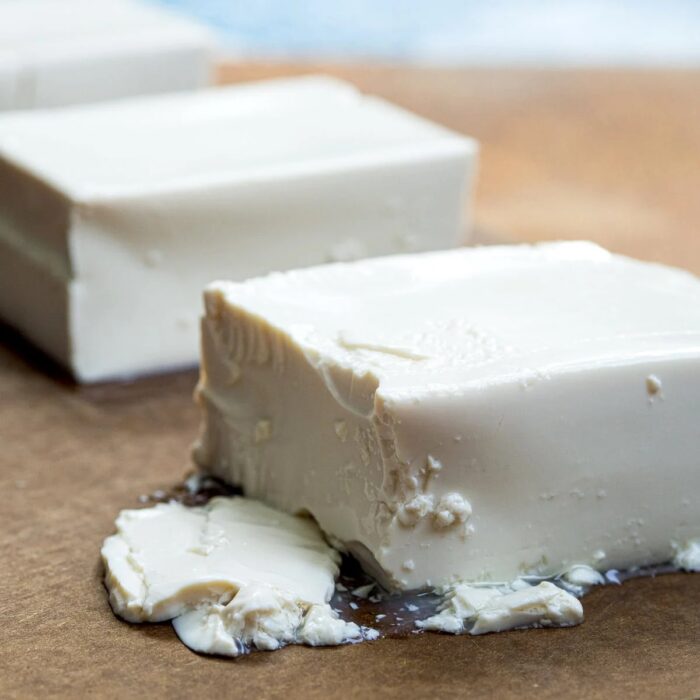
Using tofu is a great option as a vegan buttermilk substitute if you don’t have any dairy free milk or you prefer not to use it. Bonus: you get an extra boost of protein with this one!
When blended, tofu becomes extremely thick and creamy, adding both moisture and viscosity to your favorite recipes. With the addition of a bit of acid, it will also have that tang and tenderizing power we’re looking for as well! You must use silken tofu here as firm tofu will stay crumbly as opposed to blending up into a smooth creamy consistency.
How to Substitute
You’ll need:
- Silken tofu
- Water
- Fresh lemon juice or vinegar (either apple cider vinegar or distilled white vinegar)
Blend ¼ cup silken tofu, ½ cup water, and 1 tablespoon of vinegar or lemon juice until the mixture is cohesive. If it still seems a bit too thick, continue adding water to the mixture 1 spoonful at a time and blending until the consistency is right. Use this mixture as a 1:1 replacement wherever your recipe calls for buttermilk.
Vegan Buttermilk FAQs
What Type of Dairy-Free Milk Works Best?
As you can see, most every vegan buttermilk recipe featured above calls for your choice of plant based milk. You can use whatever variety you prefer or happen to have on hand, but our favorites are unsweetened almond milk or unsweetened soy milk. You can use your favorite store bought version of these items or try your hand at making your own Homemade Almond Milk!
Is There a Store Bought Dairy Free Buttermilk?
Unlike many other dairy products, for which there are a slew of ready-made store bought vegan replacements, there actually aren’t any non dairy buttermilk products available. At least not yet! We're hoping it’s only a matter of time before one dairy-free product maker decides it’s time to make buttermilk vegan.
How Long Does Vegan Buttermilk Substitute Last?
The shelf life of each of these vegan buttermilk substitutes is a bit different, but generally speaking, you’re looking at about a week. Store-bought sour cream and yogurt products will last a bit longer than the homemade options. For maximum shelf life, be sure to store your vegan buttermilk substitutes in an airtight container such as a mason jar with a tight fitting lid or a tupperware-style container.
Final Thoughts on The Best Vegan Buttermilk Substitute
As you can see, it just takes a few combinations of pantry-staple ingredients to make vegan buttermilk. Whether you opt to make use of your favorite non dairy yogurt or sour cream products, or you decide to try your hand with acidifying a plant based milk, you're just a couple steps away from an excellent substitute.
Following a vegan diet isn't always easy, especially when there is not a ready-made version of a product you're in need of. But with our tips and tricks, you can easily make the ingredients you have on hand work for you and be whipping up the best vegan buttermilk substitute in no time!

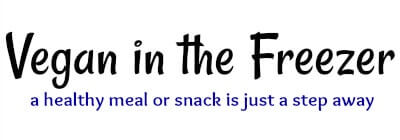
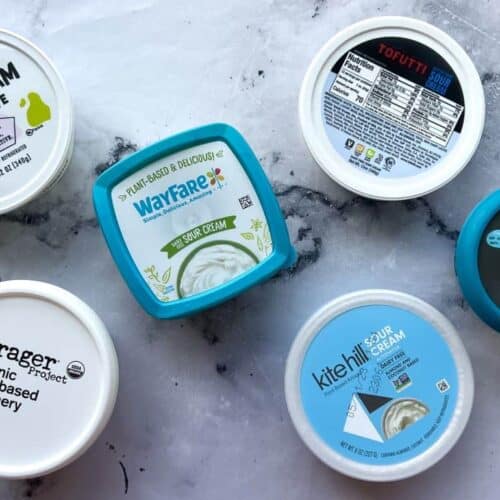
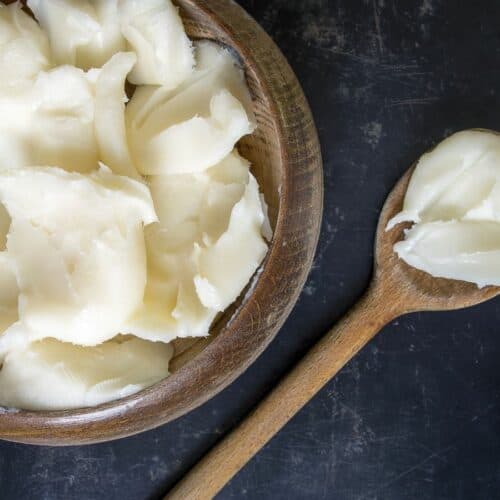
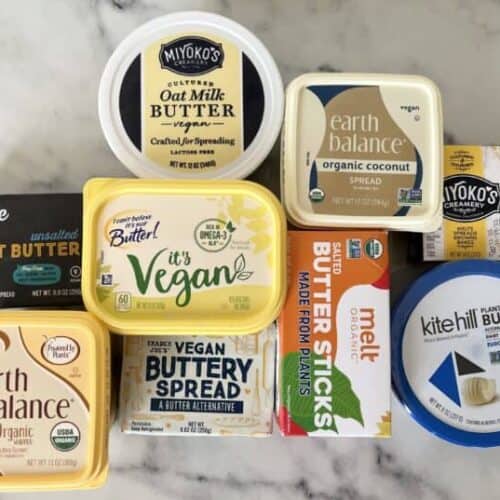
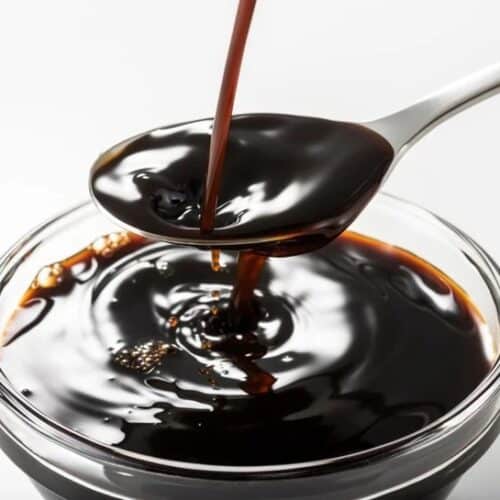


Leave a Reply